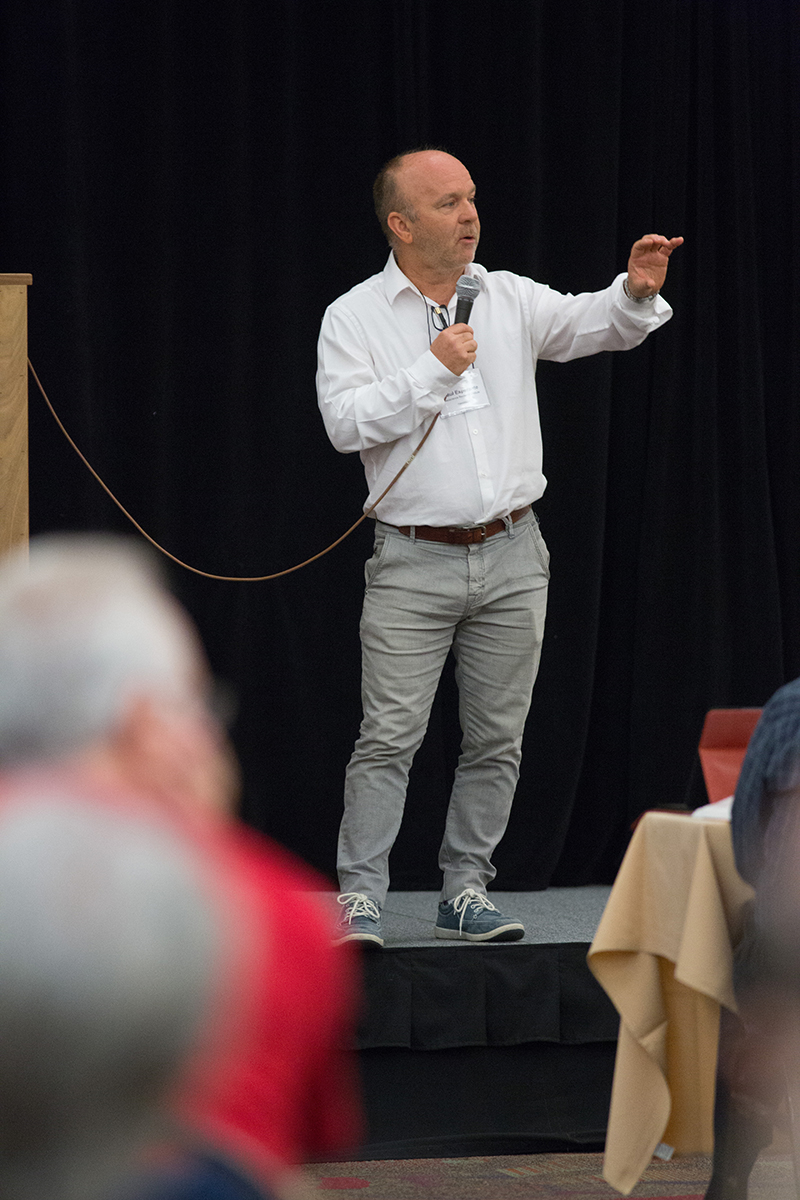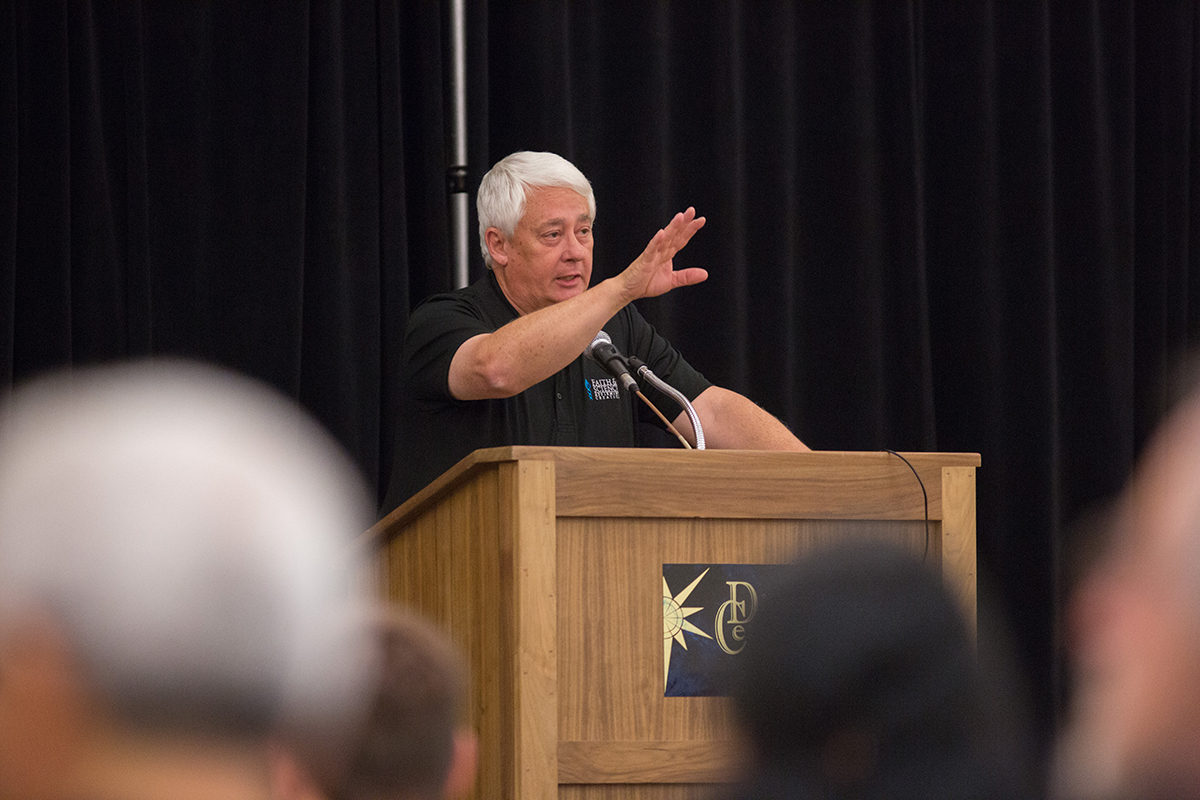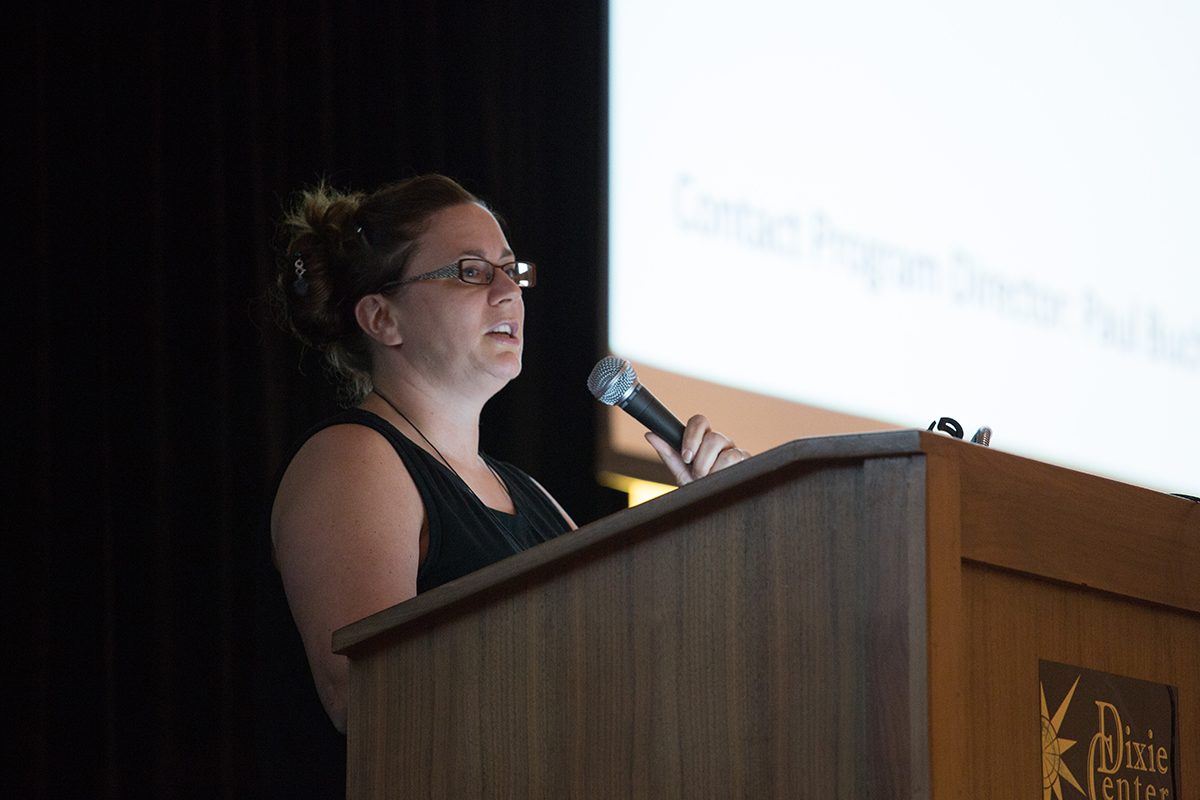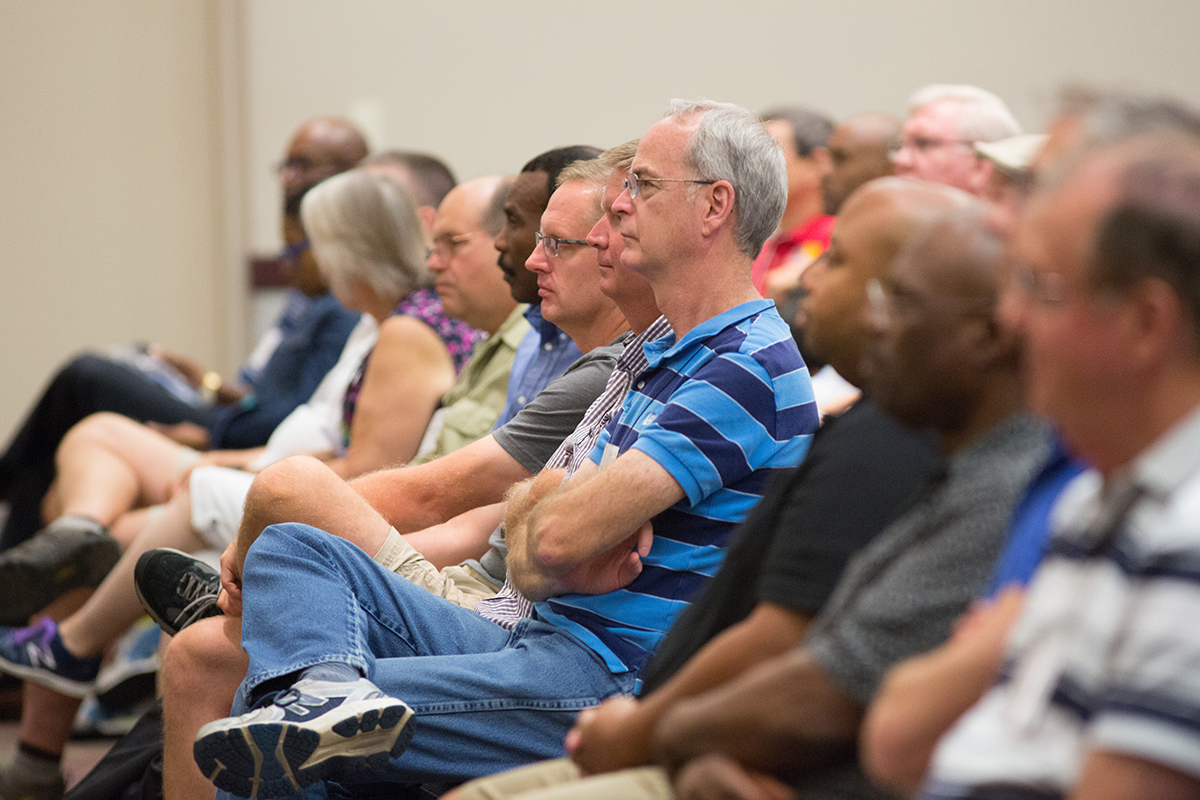
Raul Esperante, senior researcher at the Geoscience Research Institute, gives a presentation on the fossil record at the Faith & Science Conference on July 6, 2017. Photo by Pieter Damsteegt
More than 330 educators, scientists, and theologians gathered July 6 through 14 for eight full days of lectures, field trips, networking, and inspiration in St. George, Utah, at the 2017 Faith and Science Conference. The conference, themed "Affirming Creation," was coordinated by the North American Division Office of Education and the Geoscience Research Institute, and hosted by the Faith & Science Council of the General Conference.
Three field trips, daily devotionals, more than 40 lectures and Q&A sessions conducted by scientists and theologians, and reading assignments from the book Faith, Reason, & Earth History[1] both engaged attendees and encouraged support for the short Creation model.
With two-thirds of the attendees educators within the NAD, the message at the conference was declared from start to finish: faith does not need to fear the data. It can and should contribute to understanding earth’s history within the context of God’s Word, while still being honest about unanswered questions.[2] Science as seen through His Word is a progression toward truth and understanding. With this clear focus, theological and scientific successes and challenges were presented.
“This event is more focused on NAD individuals and is heavily targeted at K-12,” explains Larry Blackmer, vice president of the Office of Education in the NAD. “The purpose is to give participants the intellectual tools needed to understand and explain the complexities and facts surrounding a creation worldview.”
Blackmer says, “This conference is not designed as an open discussion of the pros and cons of evolution and creation. It is designed, as the title indicates, as an affirmation of creation.”

Larry Blackmer, vice president of the NAD's Office of Education, gives instructions during the first full session of the Faith & Science Conference at the Dixie Conference Center in St. George, Utah. Photo by Pieter Damsteegt
Ed Zinke, noted theologian and member of the Faith & Science Council, concurs. “The intended purpose is to help us understand the relationship between science and the Bible, the authoritative role of the Bible, and to help us to see how the two can come together when the Bible is the foundation for our understanding,” he says. “And as we saw throughout the conference, there are many wonderful discoveries that have taken place that never would've taken place had the scientists not come with a biblical world view.”
And that’s what was reinforced for attendees during the conference. “This is an awesome opportunity because today we're dealing with the topic of evolution and creation that is huge in our schools and in society in general,” says Lee Stahl, principal and a teacher at Reading Adventist Junior Academy in Pennsylvania. “In society, and even in our own Adventist schools, sometimes science trumps Bible in thought. I think is important to be able to realize there's science that supports the biblical concept—the biblical design and what the Bible is saying.”
Outside the classroom, Esther Collier a Bible worker from the Edwardsburg Seventh-day Adventist Church in Michigan, is realizing how she will be able to adapt what she’s learned. “I love having more tools just for apologetics and reaching out to people in the community and the people that I’m giving Bible studies to,” she says.

Suzanne Phillips, chair of the Earth and Biological Sciences Departments at Loma Linda University, gives advice to those who are considering doctoral studies in science-related fields. Photo by Pieter Damsteegt
At the conference, she adds, “I’ve learned so much. One highlight for me was the lecture on the issues of how science has changed over the years. And how originally scientists thought that 80 percent of human DNA came from prehistoric origins that they considered “junk DNA,” but have since discovered that there’s actually a function for that DNA.”
Adds, “You can’t separate science and faith. God is a God of faith; He’s also a God of science. As young people we face such a challenge in public education; to have information to help us meet those arguments and have great confidence in the authority of the World of God is really important.”
The southwestern corner of Utah seemed to be the ideal place to affirm creation. “We're in the middle of a lot of geology,” explains Zinke. “In the east, most of it is covered by vegetation. Here it's plainly visible. We have the Grand Canyon, which of course is one of the major geological places for study, and then other areas as well that will illustrate the kind of work that we're doing.”

Attendees at the 2017 Faith & Science Conference listen to a lecture on the authority of the Bible. Photo by Pieter Damsteegt
The lectures are critical, but the study of Scripture and field trips to Bryce Canyon and the Grand Canyon are what help to “seal the deal.”
“It’s important that what we teach in education isn’t just content,” says Blackmer. “The whole reason we have assembled the Adventist school system is to infuse faith in every subject. It's vitally important that we do that. We have no right to exist if we don't infuse that faith.”
NOTE: Special interview with Art Chadwick, and reactions for a wide-range of attendees coming soon. CLICK HERE for a link to the NAD's Flickr album of the conference; CLICK HERE for a video report.
